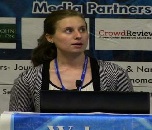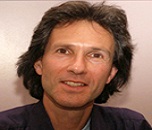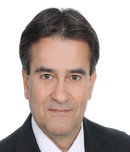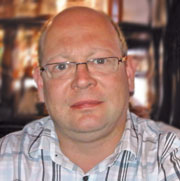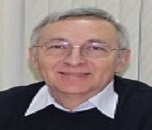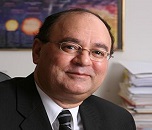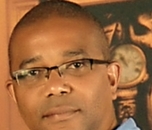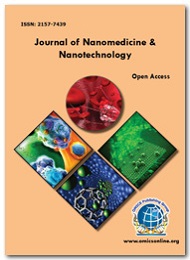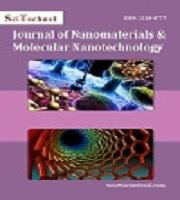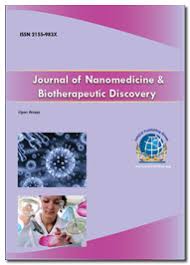Theme: Nanotechnology Inventions- The trend to build Smart Future
Nanoscience Meet 2019
We welcome members throughout the world to attend “2nd Annual Conference on Nanoscience, Nanotechnology & Advanced Materials" November 28-29, 2018 Bucharest, Romania which incorporates incite keynote introductions, Oral talks, Poster introductions and Exhibitions. While much research and item advancement in an industry is item arranged, it requires researchers with a grip of the establishments of science, innovativeness, the capacity to cooperate and appreciate seeing the viable uses of their work. Nanoscience Meet 2019 covers every one of the parts of related field analysts, the gathering of Scientists, and understudies from all edges of the globe, meet up to examine about Nanoscience and its advances. Every session of the gathering will be incorporated with master addresses, blurb and exchanges, go along with us to plan reasonable improvement forms, developments by which and how these techniques drive new approaches, propels the business and human wellbeing security. We are happy to welcome you in the interest of sorting outboard of trustees to go along with us, where you are the chief for future.
Nanoscience Meet 2019 will also provide the excellent opportunity to meet experts, exchange information, and strengthen the collaboration among Directors, Researchers, Associate Professors, Nanoscience Students, Deans and Scholars from both academia and industry. Nanoscience and Nanotechnology involve the ability to see and to control individual atoms and molecules. Everything on Earth is made up of atoms—the food we eat, the clothes we wear, the buildings and houses we live in, and our own bodies. But something as small as an atom is impossible to see with the naked eye. In fact, it’s impossible to see with the microscopes typically used in a high school science classes. The microscopes needed to see things at the nanoscale were invented relatively recently—about 30 years ago.
ME Conferences conducts Novel conferences, Symposia and Workshops concerning current international interest. It wants to serve the global information community in the development and distribution of high quality, scholarly conferences. It aims to support Global research communities, by empowering clusters of scientists to regularly meet and discuss topics with frontrunners in the field. These conferences cover diverse top-ranked specialities and budding aspects of important and relatively broad subject areas. Organize conferences for knowledge sharing and providing the global platform to explore and learn new researchers in their respective fields
Why to attend???
With individuals from around the globe concentrated on finding out about Nanoscience and Nanotechnology. The Conference unites a portion of the most recent, most provocative research from around the globe. In a little and close setting, scientists and researchers from all edges of the world can trade thoughts, share discoveries and examine future joint efforts. This will deliver a more extensive universal information base and magnificent advances in the field of Nanotechnology. Widely acclaimed speakers, the latest systems, and the freshest updates in Addiction Research and Therapy are signs of this meeting.
Target Audience:
The conference discusses the technological advancements and latest research outcomes in the field and brings together leading, scientists, research scholars, students along with industry professionals to exchange share their views on critical aspects of Nanotechnology research. The event is designed in a way to provide an exclusive platform for new researchers, scholars and educators to present and discuss the most recent innovations, trends, and concerns, practical challenges encountered and the solutions adopted in the field of Nanoscience and Nanotechnology.Nanoscience-2019 will comprise leading keynote speakers, session speakers, poster presenters who will be presenting their research on the carbon Nanotubes, graphene, solar cell, graphite, fullerene by using Nanotechnology.
- Nanotechnology Researchers
- Academics
- Engineers
- Industrialist Counsellors
- Scholars
- Scientists
- Cancer therapist
- Researchers
- Drug delivery therapist
- Nanotechnology students
ME Conferences invites all the members of Nano family, from all over the world to join and share research at the"2nd Annual Conference on Nanoscience, Nanotechnology and Advanced Materials" during 28-29 November 2019 at Bucharest, Romania. Which includes prompt keynote presentations, plenary talks, oral talks, poster presentations and exhibitions.
Theme: Nanotechnology Inventions- The trend to build Smart Future
Nano is providing a global platform to discuss and learn about Nano Sciences, Nanotechnology, NanoBiomaterial and Nanomolecular science to exchange their knowledge, experience and research innovations. The aim of Nanoscience and Nanotechnology Conferences is to create a platform for a strong exchange of the recent advancement and technologies towards Nanoworld.
Track 1: Nanoelectronics, Nanodevices and Nanosensor
Nanoelectronics is defined as usage of nanotechnology in electronic component which includes design, construction and applications of electronic circuits and devices on a nanometer scale. Nanoelectronics increase the capabilities of electronic devices such as improvising the display screens on electronics devices by reducing the weight and thickness of the screens and decreasing the consumption of power. Nanosensor carries information about nanoparticles. Nanosensor has contributed many scientific breakthroughs in Nanotechnology. Different types of sensors are built from nanomaterials to sense bacteria or viruses, to detect a range of chemical vapours and to detect single molecules to help pharmaceutical companies in the production of drugs.
Track 2: Polymer Nanotechnology
Amongst the most completely explored materials, this kind of material has developed to wind up a standout nowadays, animated by the interest for asset effective get together of generators, transformers, specialized gadgets and so on. Polymer matrix based nanocomposites have become a prominent area of current research and development in the large field of nanotechnology. The polymer literature has been dominated by exfoliated clay-based nanocomposites have but there are a large number of other significant areas of current and emerging interest. Relative to crystallization and glass transition behavior the important question of the “nano-effect” of nanoparticle or fiber inclusion relative to their larger scale counterparts is addressed.
Track 3: Nanomedicine and Nanopharmaceuticals
The first nanomedicines approved for use were developed from research dating back to the 1970s.Nanopharmaceuticals such as liposomes, quantum dots, dendrimers, carbon nanotubes and polymeric nanoparticles have brought considerable changes in drug delivery and the medical system. Improved therapeutic activity and reduced toxicity in the nonclinical model systems has been showed these liposomal formulations of existing drugs showed. There is a great benefit for the patients in comparison with the conventional drugs in Nanopharmaceuticals. This fact, combined with the technical challenges in commercial-scale production of nanoparticles, led to only limited investment in nanomedicines by the major pharmaceutical companies enhanced oral bioavailability, improved dose proportionality, enhanced solubility and dissolution rate, suitability for administration and reduced food effects are several advantages of these drugs.
Track 4: Advanced Nanomaterials and Its Applications
The nanomaterial is the basic part of the nanoscience and nanotechnology. The complex functions of nanomaterials in systems require further improvement in the preparation and modification of nanomaterials. Such advanced nanomaterials have attracted a massive interest during recent years and will form the basis for further development in this area. The control of composition, size, shape, and morphology of Nanomaterials and Nanoparticles is a necessary foundation for the development and application of Nanoscale devices in all over the world. These are the critical enablers that allow mankind to exploit the ultimate technological capabilities of magnetic, electronic, mechanical and biological systems. Magnetic Nanodevices, Nano-biosensors, Nanoswitches, Optical Biosensors. Nanodevices will ultimately have an enormous impact on our ability to enhance energy conversion, produce food, control pollution, and improve human health and longevity.
Track 5: Nanotechnology for Energy and Environment
Nanotechnology and nanomaterials are allowing maintainable results for renewable energy and environmental challenges. Several products have been marketabley established and additional are approaching onto the market. To create more competent and cost-effective energy and to progress the environment, as causing small amount of pollution during the production of materials, manufacturing solar cells that produce electricity at a reasonable cost, cleaning up organic composites contaminating groundwater, clearing volatile organic compounds(VOCs) from air and so forth nanotechnology is exultantly used in various applications.
Track 6: Green Nanotechnology
Track 7: Nano drug delivery
Nanoparticles have a huge potential of delivering drug effectively. Nanosystems with different compositions have been considerably investigated for drug delivery and gene therapy purposes. The interactions of nanomaterials with the biological environment, drug release, multiple drug administration, stability of therapeutic agents and Several anti-cancer drugs including paclitaxel, doxorubicin is much needed. Nanomaterials comprising of peptide-based nanotubes are used to target the vascular endothelial growth factor receptor and cell adhesion molecules like integrins, cadherins and selectins, which is a new approach to control disease progression.
Track 8: Nanosafety and Nanotoxicity
There is a potential toxic effect of ultrafine particles of Nanoscale dimensions, both at the organ level including cellular regeneration and DNA repair and cellular lever. Mainly the focused area is ultrafine particles related to Carbon, or silica or metals such as titania, silver, and copper. This is mainly due to their catalytic properties in their chemical ability to facilitate chemical transformation of epitopes. In wound healing Silver nanoparticles have been utilized as antimicrobial agents and are known to cause side effects. Recent advances in engineered surfaces like zeolites or metal–organic frameworks are potentially cytotoxic, due to their ultrahigh surface area and potential for reactive oxygen species generation or modification of lipids, membranes, and amino acids.
Track 9: Molecular Nanotechnology and Nano Robotics
A technology that is used to design complex structures through mechanosynthesis process, in order to obtain the correct atomic specifications is known as Molecular Nanotechnology. In this technology, using Nanomachines complex products are built. It is based on molecular manufacturing so this process is not at all similar to nanomaterials as. Complex molecular machine systems will assist the mechanosynthesis process used for this technology. To create hundreds of nanorobots which work together in coordination is the main motto behind molecular nanotechnology. In an artificial environment these nanorobots should also be able to design and produce more nanorobots with the help of sophisticated building blocks. A number of patients can be taken care of simultaneously and that too for hours, when a number of nanorobots are designed to work in the medical field.
Track 10: Quantum Dots
Quantum Dots and Magnetic Nanoparticles have lots of applications in analytical methods. Quantum Dots are semiconductor nanoparticles whose electronic energy levels are considerably controlled by the particle dimensions. This control comes about due to quantum confinement. QDs are useful as an analytical tool due to its unique optical properties. These optical properties consist of narrow emission spectra, broad absorbance spectra, emission wavelength which is adjustable by adjusting the size of the particle, high quantum efficiency and low photobleaching rates. MNPs are made of magnetite (Fe3O4) or maghemite (γâ€Fe2O3). These materials are typically superparamagnetic in the nanoscale range. The magnetic properties of these nanomaterials allow them to be manipulated by magnetic fields.
Track 11: Mathematical Modelling of Nanotechnology
The mathematical analysis is a compelling goal for any new field. We will consider three themes in bridging time and length scales, in fast algorithms and in optimization and predictability which indicate some of the directions that increasing role might take. The new notion of ‘design maps’ for nanovector could provide guidance for the development of optimized injectable nanocarriers through mathematical modeling. Its solutions contain significant technical challenges. Mathematics and simulation would be enormously stimulated by the challenges of nanoscale modelling In a complementary way. While some areas of mathematics are repeatedly developed such as fast multipole and multigrid algorithms are ready to apply in nanoscale modelling.
Track 12: Recent development and advanced researches in Nanotechnology
Applications of nanoparticles in drug delivery, protein, peptide delivery and in cancer therapy such as carbon nanotube, dendrimers, nano crystal, nano wire, nano shells etc. are given. The advancement in Nanotechnology helps in the treatment of neuro degenerative disorders such as Parkinson’s disease and Alzheimer’s disease. The Nanotechnology applications are in tuberculosis treatment, the clinical application of nanotechnology in operative dentistry, in ophthalmology, in surgery, visualization, tissue engineering, antibiotic resistance, immune response. To detect diseases Nano pharmaceuticals can be used at much earlier stages.
A wide range of technologies conducted on functional systems at the nanometer scale is defined as Nanotechnology. Nanotechnology is the ability that can be projected to construct items either using the bottom-up approach or using the top-down approach, whereby the most well-established form of nanotechnology is top-down nanotechnology. By 2024 the global nanotechnology market will reach beyond US$ 125 Billion mark. There is a broad and fundamental impact of nanotechnology on nearly all sectors of the global economy, namely electronics, energy, biomedical, cosmetics, defense, automotive and agriculture among others. Advancement in technology, private sector funding for R&D, increasing government support, growing demand for miniaturization of devices and strategic alliances between countries are expected to drive the global nanotechnology market growth.
Nanoscience 2019 welcomes attendees, presenters & exhibitors from all over the world to, Finland. The organizing committee is gearing up for an exciting and informative conference program this year also which includes plenary lectures, symposia, workshops on a variety of topics, poster presentations and various programs for participants from all over the world. We are delighted to invite you all to join & register for the 2nd Annual conference on Nanoscience, Nanotechnology & Advanced Materials" which is going to be organized during November 18-19 in Helsinki, Finland.
Scope of the Conference:
The nanotechnology market is often divided by some sort of applications, end-user and geography completely. The market is classified into numerous classes like nanocomposites, nanofibers, nanoceramics, nanomagnetics and more supported the categories of nanotechnology commercially on the market. Each single kind of nanotechnology differs greatly and also the composition is completely different with different technical specifications. As of 2019, most progress has been made in nanotech research and development that commercialization is accelerating broadly. One factor that boosts the adoption of nanotechnology will increase within the manufacture and availableness of carbon nanotubes, a basic nanomaterial that may be utilized in a good type of factory-made merchandise. These nanotubes are shown to possess extremely valuable qualities, together with incredible strength, very light-weight and high conduction of electricity. As carbon Nanotube supplies increase and prices drop, use will increase considerably. (Prices have fallen from hundreds of dollars per gram within the late 1990s to solely a few dollars per gram today—depending on the exact specifications of the nanotube). Investment in nanotechnology analysis and also the marketplace for nanotech products have expanded steadily.
Why Helsinki:
Helsinki, Finland’s southern capital, sits on a peninsula in the Gulf of Finland. Its central avenue, Mannerheimintie, is flanked by institutions including the National Museum, tracing Finnish history from the Stone Age to the present. Also on Mannerheimintie are the imposing Parliament House and Kiasma, a contemporary art museum. Ornate red-brick Uspenski Cathedral overlooks a harbour.
Here nanotechnology development must be directed to manage while competing for the global product to increase national competitiveness. Nanotechnology development in Finland is getting more active, where many institutions from several ministries have been involved seriously.
There are a large number of institutes and associations in Helsinki dealing with the researchers on Nanotechnology and Advanced Material which might be more beneficial for conducting the conference in Finland due to its supportive environment and positive vibes.
Target Audience:
- Nanotechnology Scientists/Research Professionals
- Physicists/Chemists
- Junior/Senior research fellows of Nanotechnology/ Materials Science/ Polymer Science
- Nanotechnology/ Materials Science Students
- Directors of Nanotechnology companies
- Nanotechnology Engineers
- Members of different Nanotechnology/Materials science associations
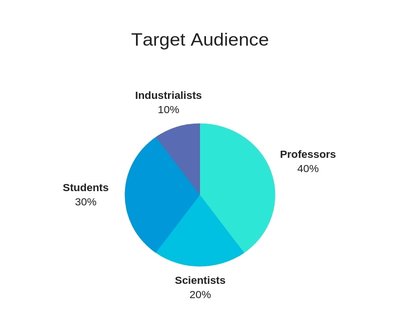
List of famous University in The World:
- SUNY Polytechnic Institute
- Cornel University
- University of Michigan
- Rice University
- University of Virginia
- The University of North Carolina at Chapel Hill (UNC)
- Purdue University
List of the University in Finland:
- Aalto University
- Helsinki University
- University of Jyvaskyla
- Tempere University of Technology

List of Research Institutes:
- VTT produces research services
- University of Jyväskylä Nanoscience Center
- Helsinki University - Computational Soft Matter Research Group
List of the Company:
- Micronova
- Nano-Photonics Materials and Technologies for Multicolor High-Power Sources (NATAL)
- Nanovate Oy
A Glance at Market Value:
The Global nanotechnology Market is poised to grow at a CAGR of around 18.1% over the next decade to achieve around $173.95 billion by 2025. This industry report analyses global markets for nanotechnology across all the given segments on global moreover as regional levels presented within the research scope. The study focuses on market trends, leading players, provide chain trends, technological innovations, key developments and future methods. With comprehensive market assessment across the main geographies like North America, Europe, Asia Pacific, Middle East, Latin America and rest of the globe the report could be a valuable asset for the existing players, new entrants and the future Investors.
The Global Nanomagnetics Materials and Devices Net Market Revenue has shown in the below graph. Revenue is projected to increase to nearly $8.21 billion in 2015 and $10.39 billion in 2021.Nanomagnetics Materials Market is likely to grow at healthy CAGR between 2015 and 2021.

The factors such as advancement in technology, increasing government support and private sector funding for R&D, growing demand for miniaturization of devices, and strategic alliances between countries are expected to drive the global nanotechnology market growth. However, the issues such as environmental, health, and safety risks, and concerns relating to nanotechnology commercialization are expected to hamper market growth.
Conference Highlights
- Nanoelectronics,Nanodevices and Nanosensors
- Polymer Nanotechnology
- Nanomedicine & Nanopharmaceuticals
- Advanced Nanomaterials and its application
- Nanotechnology for Energy and Environment
- Green Nanotechnology
- Nano drug delivery
- Nanosafety & Nanotoxicity
- Molecular Nanotechnology and Nano Robotics
- Quantum Dots
- Mathematical Modelling of Nanotechnology
- Recent development and advanced researches in Nanotechnology
To share your views and research, please click here to register for the Conference.
To Collaborate Scientific Professionals around the World
| Conference Date | November 28-29, 2019 | ||
| Sponsors & Exhibitors |
|
||
| Speaker Opportunity Closed | |||
| Poster Opportunity Closed | Click Here to View | ||
Useful Links
Special Issues
All accepted abstracts will be published in respective Our International Journals.
- Journal of Nanomedicine & Nanotechnology
- Journal of Nanomaterials & Molecular Nanotechnology
- Journal of Nanomedicine & Biotherapeutic Discovery
Abstracts will be provided with Digital Object Identifier by







